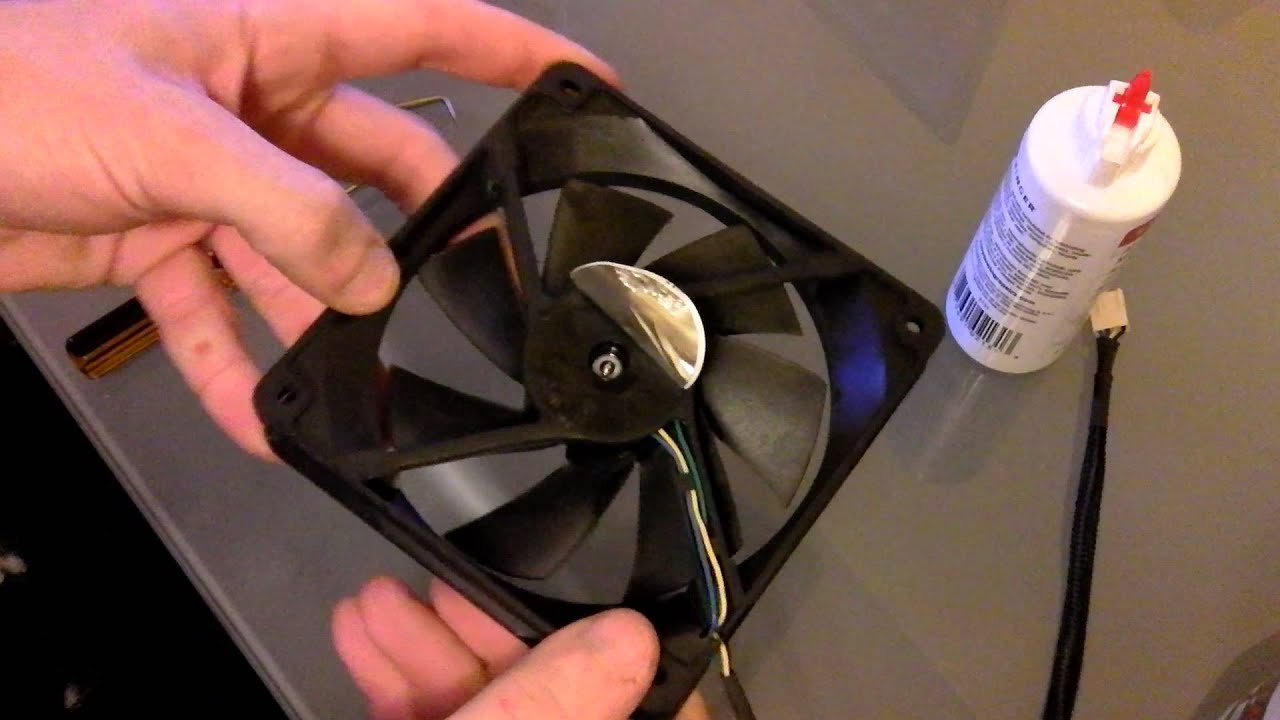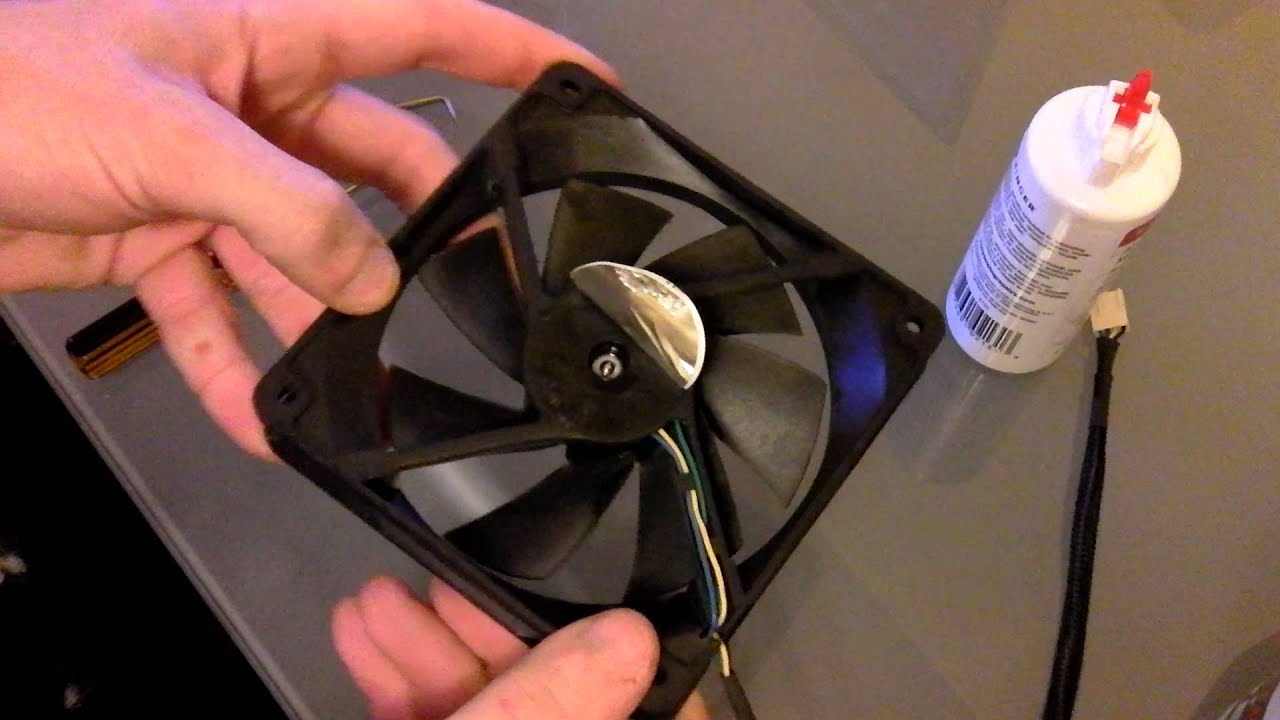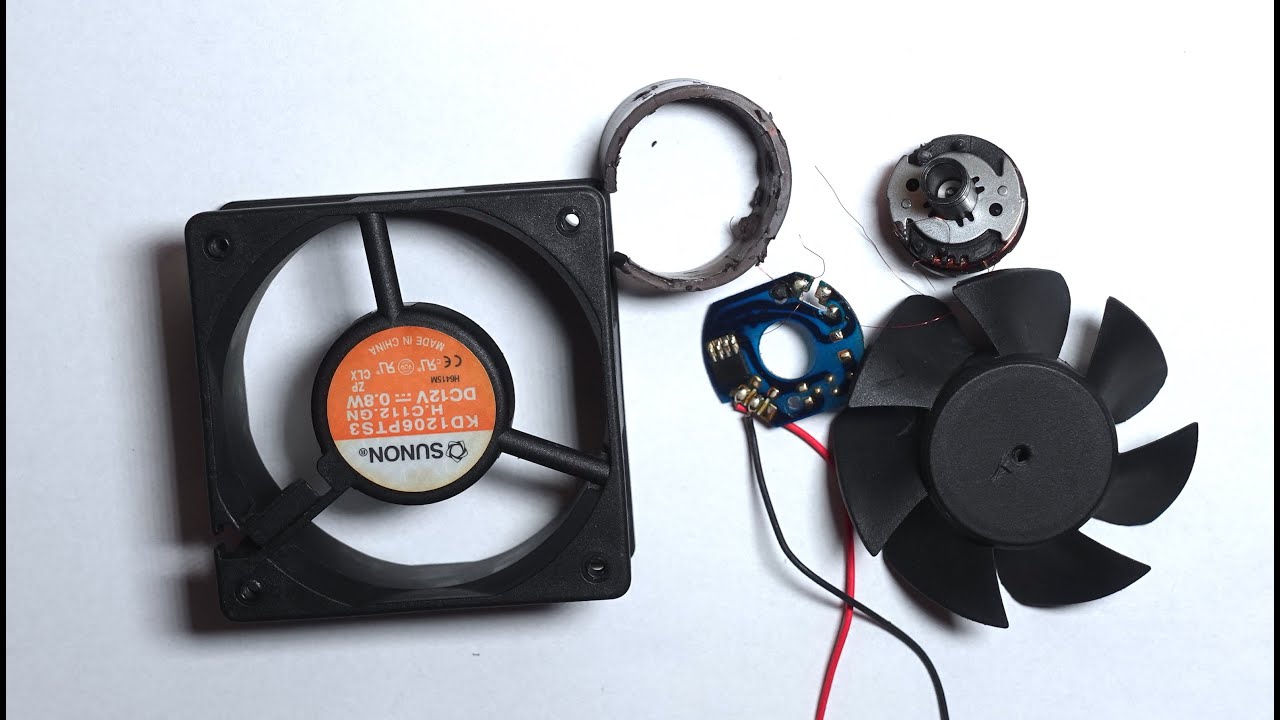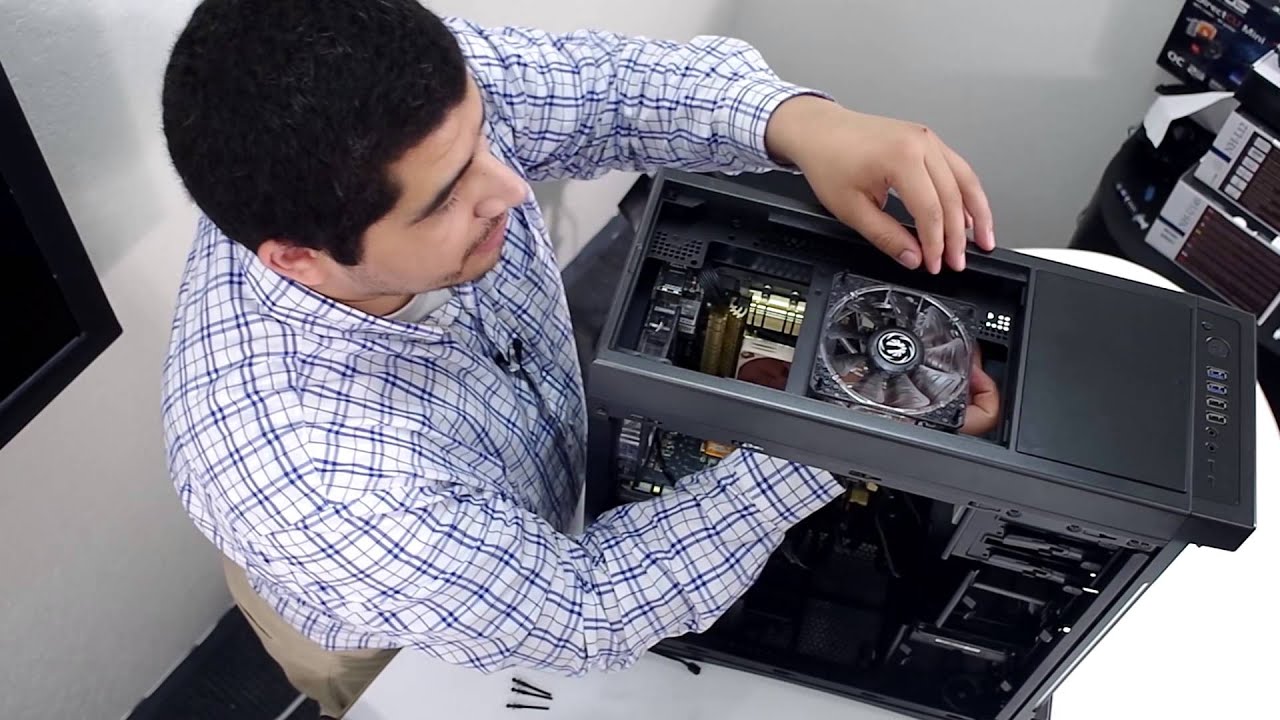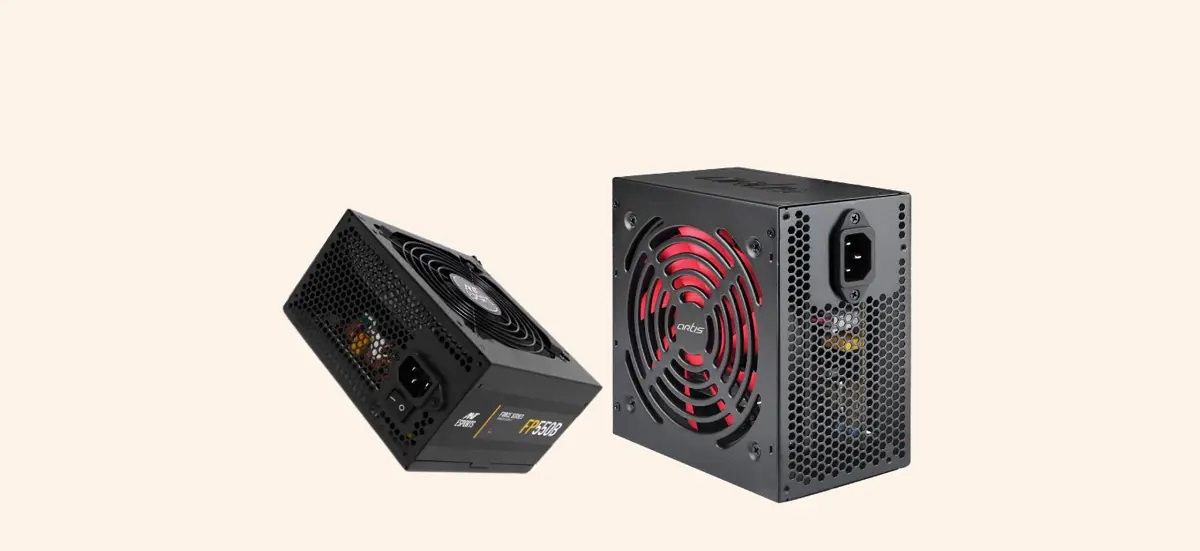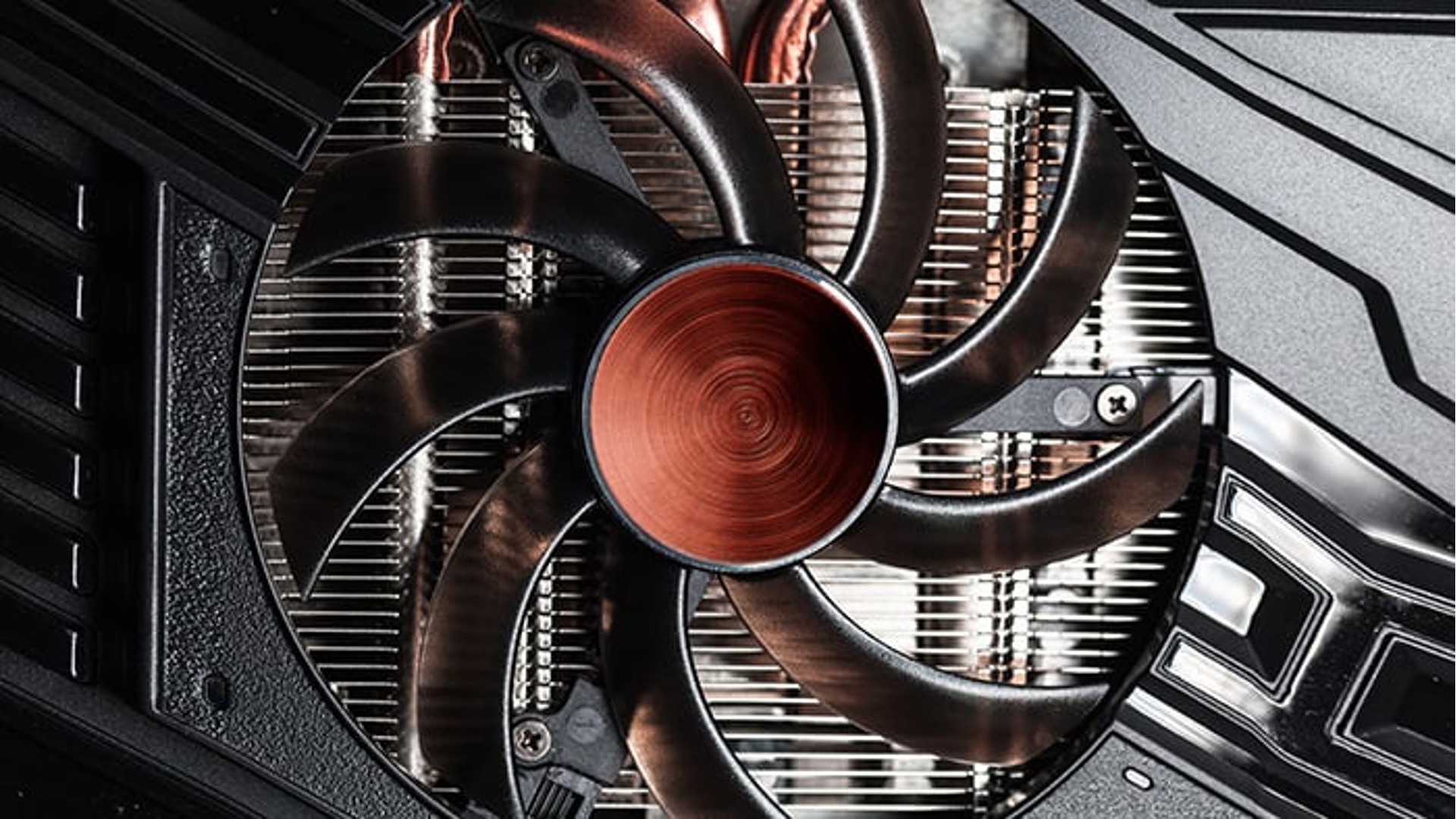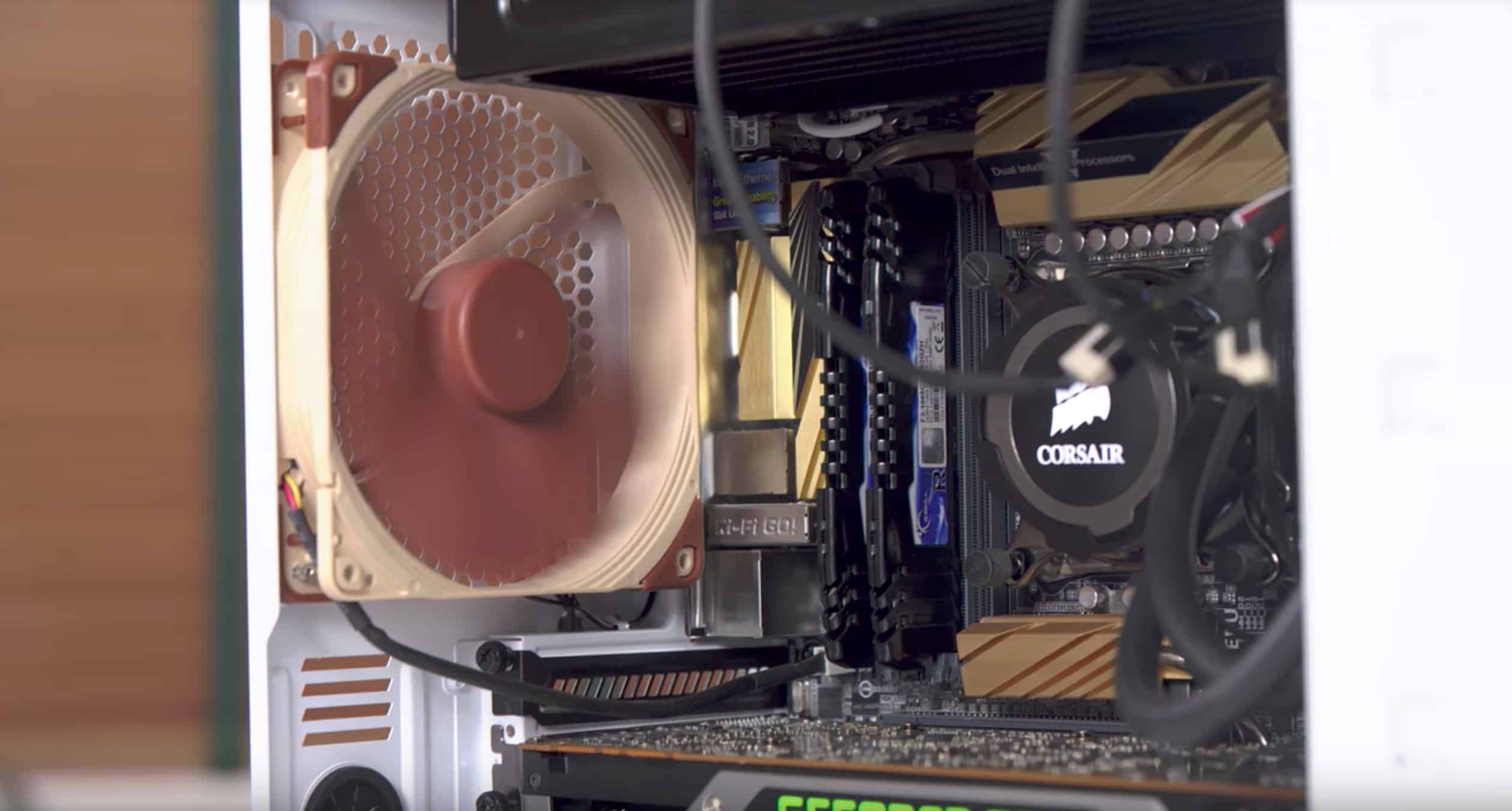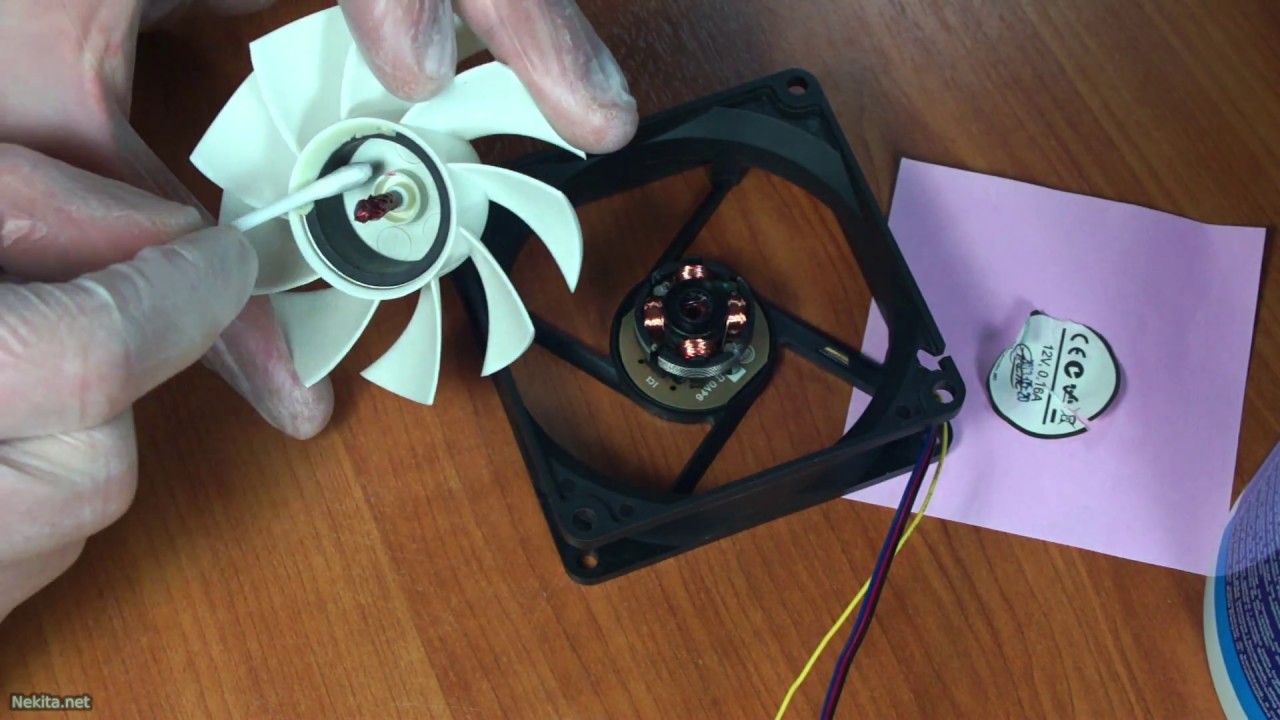Introduction
Welcome to our guide on how to lubricate a computer case fan. If you’ve noticed that your computer’s fan is making strange noises or not functioning as efficiently as it used to, it may be time to give it some much-needed TLC. Lubricating the fan can help reduce noise, extend its lifespan, and improve its overall cooling performance.
A computer case fan plays a crucial role in maintaining the temperature inside your computer. It helps to dissipate heat generated by the CPU, graphics card, and other components. Over time, the fan’s bearings can become dry or worn out, resulting in excessive noise and reduced performance. By lubricating the fan, you can restore its smooth operation and ensure that your computer remains cool and stable.
In this guide, we will walk you through the steps of lubricating a computer case fan. We will cover everything you need to know, from identifying signs that your fan needs lubrication to the materials required for the process. Whether you’re a tech enthusiast or a novice computer user, this guide will provide you with the necessary information to keep your computer running smoothly.
It’s important to note that not all computer case fans are designed to be lubricated. Some fans have sealed bearings or are not user-serviceable. Before attempting to lubricate your fan, make sure it’s the type that can be lubricated. Consult your fan’s manufacturer’s documentation or refer to the specifications to confirm if it can be lubricated.
Now, let’s dive into the details of why lubricating a computer case fan is important and the signs that indicate your fan needs some attention.
Why lubricate a computer case fan?
Lubricating a computer case fan is an essential maintenance task that can provide a range of benefits for your computer system. Here are a few reasons why lubrication is important:
1. Noise reduction: Over time, the bearings in a computer case fan may become dry or worn out, resulting in excessive noise. This can be annoying and distracting while you’re using your computer. By lubricating the fan, you can restore smooth operation and reduce the noise levels, making your computing experience more pleasant.
2. Improved performance: A well-lubricated fan operates smoothly and efficiently, moving air more effectively across the components in your computer. This helps to dissipate heat and keep temperatures within acceptable limits. By lubricating the fan, you can ensure optimal cooling performance and prevent overheating, which can lead to system instability or decreased performance.
3. Extended lifespan: Regular lubrication can help prolong the lifespan of your computer case fan. Over time, the lack of lubrication can cause increased friction and wear on the bearings, leading to premature failure. By lubricating the fan at regular intervals, you can reduce wear and tear, allowing the fan to operate smoothly for longer.
4. Cost savings: Replacing a computer case fan can be expensive, especially if it’s a high-performance or specialized fan. By taking the time to lubricate your fan, you can potentially avoid the need for a costly replacement. Regular maintenance can help extend the life of your fan, saving you money in the long run.
5. Environmental impact: By practicing proper maintenance, including lubricating your computer case fan, you contribute to a more sustainable environment. By prolonging the life of your fan, you reduce electronic waste and the need for new manufacturing, minimizing the carbon footprint associated with producing new components.
Now that you understand the importance of lubricating a computer case fan let’s move on to the next section where we’ll discuss the signs that indicate your fan needs some attention.
Signs of a fan in need of lubrication
Identifying the signs that your computer case fan needs lubrication is essential for timely maintenance. Here are a few indicators that indicate your fan may be in need of lubrication:
1. Unusual noises: If you notice your computer fan making squeaking, grinding, or rattling noises, it’s a clear sign that the fan’s bearings may be dry or worn out. These noises can indicate increased friction, and lubricating the fan can help alleviate the sound and restore smooth operation.
2. Reduced airflow: A fan in need of lubrication may have reduced airflow. As the bearings become dry, they can hinder the rotation of the fan blades, leading to decreased airflow. This reduced airflow can result in higher operating temperatures for your components and poor cooling performance.
3. Fan not spinning or spinning slowly: In some cases, a fan may stop spinning altogether or spin at a slower than usual speed. Insufficient lubrication can cause resistance and hinder the fan’s ability to rotate properly. If you observe that your fan is not spinning or spinning slower than normal, it may be time to lubricate it.
4. Overheating components: If your computer’s CPU or graphics card is running hotter than usual, it could be a sign of a fan that is not functioning optimally. Insufficient lubrication can reduce the fan’s ability to dissipate heat, leading to increased temperatures. Monitoring your component temperatures regularly can help you identify any overheating issues that may stem from an unlubricated fan.
5. Fan vibrations: Excessive vibrations can also indicate a fan in need of lubrication. As the bearings wear out, the fan may become unbalanced, resulting in vibrations that can be felt or seen. If you notice excessive vibrations, it’s a good idea to inspect and lubricate the fan to restore its balance.
It’s important to note that while these signs most commonly indicate a fan in need of lubrication, they can also be symptoms of other underlying issues. If you’re unsure, it’s always a good idea to consult a professional or refer to your computer’s manufacturer for further guidance.
Next, we will discuss the materials required for lubricating a computer case fan.
Materials needed for lubrication
Before you start the process of lubricating your computer case fan, you’ll need to gather a few essential materials. Here’s a list of what you’ll need:
1. Lubricant: The most important material you’ll need is a suitable lubricant. It’s essential to choose a lubricant specifically designed for fan bearings. Avoid using WD-40 or other general-purpose lubricants, as they can attract dust and cause damage to the fan over time. Instead, opt for a high-quality fan bearing lubricant, such as a synthetic oil or a specialized fan bearing grease. Check with the fan manufacturer or do some research to find the recommended lubricant for your specific fan.
2. Cotton swabs or small brush: To apply the lubricant to the fan’s bearings, you’ll need a tool to reach the small crevices. Cotton swabs or a small brush can be useful for this purpose. They allow for precise application and help distribute the lubricant evenly on the bearings.
3. Screwdriver or tool set: Depending on your computer case, you may need a screwdriver or a set of tools to access and remove the fan. Different computer cases have different mounting mechanisms, so make sure you have the necessary tools on hand to safely remove the fan for lubrication.
4. Cleaning supplies: Before lubricating the fan, it’s a good idea to clean it to remove any dust or debris that may have accumulated. You can use compressed air, a soft brush, or a lint-free cloth to gently clean the fan blades and surrounding area. Avoid using water or any liquid cleaners, as they can damage the fan or create a short circuit.
5. Work surface and a grounding strap (optional): It’s recommended to work on a clean, static-free surface to avoid any damage to the components or the fan itself. Additionally, if you’re working inside your computer case, using a grounding strap can help prevent any static electricity from damaging your computer’s sensitive parts.
Make sure you have all the necessary materials ready before starting the lubrication process. Having everything prepared in advance will help streamline the process and ensure a smooth experience.
Now that we have covered the materials, let’s move on to the step-by-step guide for lubricating a computer case fan.
Step-by-step guide to lubricating a computer case fan
Now it’s time to dive into the step-by-step process of lubricating your computer case fan. Follow these instructions carefully to ensure a successful lubrication:
Step 1: Gather your tools and materials: Ensure that you have all the necessary tools and materials mentioned in the previous section. This includes the lubricant, cotton swabs or a small brush, a screwdriver or tool set, and cleaning supplies.
Step 2: Power off and disconnect: Before working on your computer’s internal components, make sure to power off your computer and disconnect it from the power source. This is essential for your safety and to prevent any damage to the computer or yourself.
Step 3: Access the computer case fan: Depending on your computer case, you may need to remove the side panel or access the fan from a different angle. Use a screwdriver or the appropriate tools to safely remove the fan from its mounting position.
Step 4: Clean the fan: Once you have the fan in hand, use compressed air, a soft brush, or a lint-free cloth to gently clean the fan blades and surrounding area. Remove any dust or debris that may have accumulated, ensuring a clean surface for the lubrication process.
Step 5: Apply the lubricant: Dip a cotton swab into the lubricant or use a small brush to apply a small amount of lubricant to the fan’s bearings. Be careful not to over-lubricate, as excess lubricant can attract dust and create further issues. Refer to the fan manufacturer’s recommendations for the amount of lubricant to be used.
Step 6: Reassemble the fan: Once the lubricant has been applied, carefully reassemble the fan and secure it back into its original position. Make sure that all screws or mounting mechanisms are properly tightened but avoid overtightening, as this can cause damage to the fan or the computer case.
Step 7: Power on and test: After the fan is reinstalled, reconnect your computer to the power source and power it on. Check if the fan is functioning properly and listen for any strange noises. Monitor the fan’s performance to ensure that it is running smoothly and efficiently.
Step 8: Monitor and maintain: Regularly monitor your computer case fan’s performance and keep an eye out for any signs of deterioration. If you notice any unusual noises or reduced airflow, it may be an indication that further lubrication or maintenance is required.
Remember to consult your fan’s manufacturer documentation or refer to their website for any specific lubrication instructions or recommendations. Following these steps and maintaining your fan will help prolong its lifespan and ensure optimal cooling performance for your computer system.
Now that you know how to lubricate a computer case fan, you can confidently tackle this maintenance task and keep your computer running smoothly.
Conclusion
Congratulations! You have now learned how to lubricate a computer case fan, an essential maintenance task to ensure optimal performance and longevity of your computer system. By following the steps outlined in this guide, you can reduce noise, improve cooling performance, and extend the lifespan of your fan.
Lubricating a computer case fan is a simple and cost-effective way to maintain your computer’s cooling system. Regular maintenance can help prevent overheating, reduce the risk of component failure, and save you money on costly replacements.
Remember to always check if your fan is designed to be lubricated before attempting this process. Refer to your fan’s manufacturer documentation or specifications to confirm its user-serviceability.
In addition to lubrication, it’s important to regularly clean your computer case and fans to remove dust and debris that can hinder performance. This, combined with lubrication, will ensure optimal cooling for your computer and help maintain its reliability.
As with any maintenance task, it’s crucial to follow safety precautions and disconnect your computer from the power source before working on any internal components. If you’re uncertain about tackling this task yourself, don’t hesitate to seek professional assistance.
By taking the time to lubricate your computer case fan, you’re investing in the longevity and efficiency of your computer system. Remember to monitor your fan’s performance regularly and address any signs of deterioration promptly.
We hope this guide has provided you with the knowledge and confidence to perform this maintenance task. Enjoy a quieter and cooler computing experience with a well-lubricated computer case fan!







